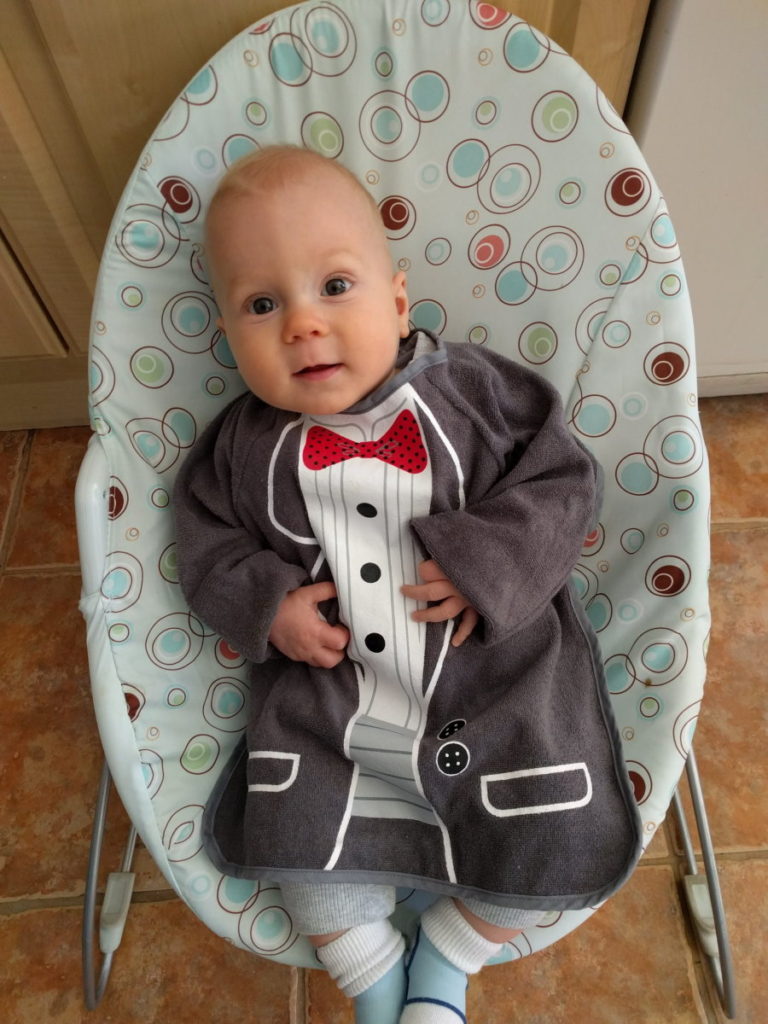It may have caught your attention that nowhere in this blog I mention any of the typical baby gear or “containers” that are commonly purchased for infants, such as doorway jumpers, playpens, baby walkers, portable car seats, strollers (yes, even those!), or baby loungers. Maria Montessori believed that children learn through movement, so free movement is essential for building the neural pathways of intelligence. According to Montessori, if we restrict a baby’s movement, we’re also hindering their ability to learn.
WHY IS THIS THE CASE?
The avoidance of baby containers isn’t just a Montessori approach; many child development experts and special educators support this idea. This blog written by an occupational therapist explains it all in detail, and it’s worth reading. Personally, I fully believe in this philosophy and adhered to it when my own child was born.
There was one exception: the baby lounger. We received one as a gift from a dear friend. Initially, we didn’t use it, but one day, when my partner’s parents were visiting, my mother-in-law pointed out that sometimes, if the baby is raised a little, they can be part of the social circle. This turned out to be helpful on some occasions, like when guests came for lunch. We could all eat together without someone needing to hold the baby, and they loved sitting in the chair, listening to us. They would turn their head to follow the conversation, always looking at the person speaking. We never used the lounger for extended periods but usually brought along the play mat instead.

SHOULD WE AVOID BABY CONTAINERS ALTOGETHER?
Experts recommend that a baby should not be in a container for more than an hour a day, ideally in 15-minute segments. They suggest following the 1:2 rule, meaning the baby should have at least twice as much free movement time as container time. Naturally, this applies to their awake time.
If we’re traveling, of course, we need to use the car seat—safety always comes first. Before relying on the stroller, try to use the bassinet as long as possible, since there, the baby can lie flat, stretch out, and move around.
If we’re going for a walk or running errands, it’s often impossible to avoid using the stroller. In those cases, if we have the time and opportunity, we should try to take the baby out for a few moments to let them move around a bit.
FINAL THOUGHTS
I should also add that I have many friends who used some or maybe even all types of baby containers. Many of them feel that a playpen is essential because, without it, they wouldn’t even be able to sit down for a moment. I completely understand and respect this. You are the most important person to your baby, and if you need a minute to calmly enjoy a cup of tea, go ahead!
Of course, it’s nearly impossible to go through everyday life without using some kind of baby container. My goal is not to say we should get rid of them all or feel guilty if we need to use them. I’m only suggesting that we try to limit their use to support our baby’s development as best as we can.
What are your thoughts on this topic? Do you have any questions about how to manage daily life without relying heavily on baby containers? Don’t hesitate to write them below in the comment section!
Read this guest post to learn about how to start working out after giving birth!
